From the breathtaking bridge of Sao Paulo to the spectacle of Sugarloaf Mountain, the bustling nation of Brazil has its fair share of distinctive places to behold. From dinosaur-shaped museums to the illustrious and world-famous Christ the Redeemer statue, there are so many famous places to see in Brazil that it might be hard to narrow down that ever-growing list. So, in case you are interested in exploring some of its natural wonders and its architectural tourist attractions, we’ve asked some of the world’s leading travel writers and bloggers to help us curate this list; the top 20 landmarks in Brazil!
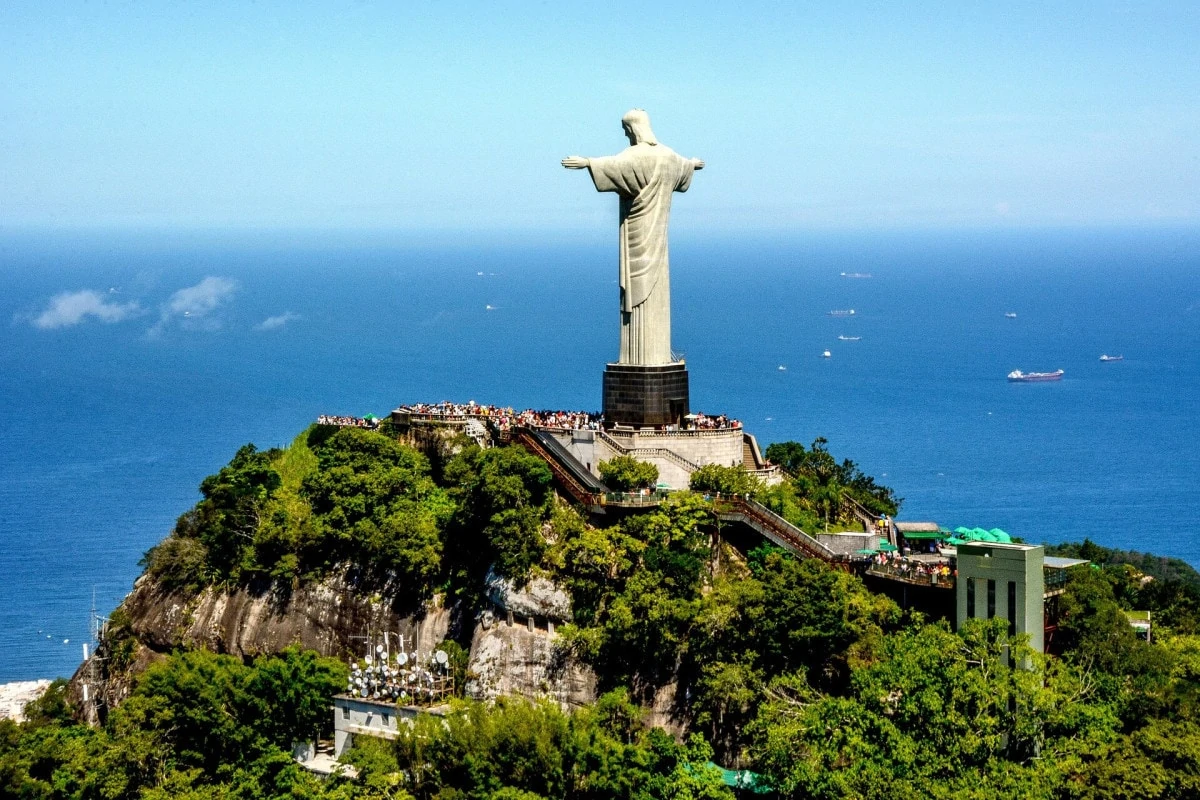
Skip ahead
Our favourite 10 Landmarks in Brazil
- Christ the Redeemer
- Sugarloaf Mountain
- Octavio Frias de Oliveira Bridge
- Iguazu Falls
- Museu Oscar Niemeyer
- Amazon River
- Amazon Theatre
- Lenois Marahenses National Park
- Copacabana
- Pelourinho
Christ the Redeemer, Rio de Janeiro
Explored by Heather from the Conversant Traveller
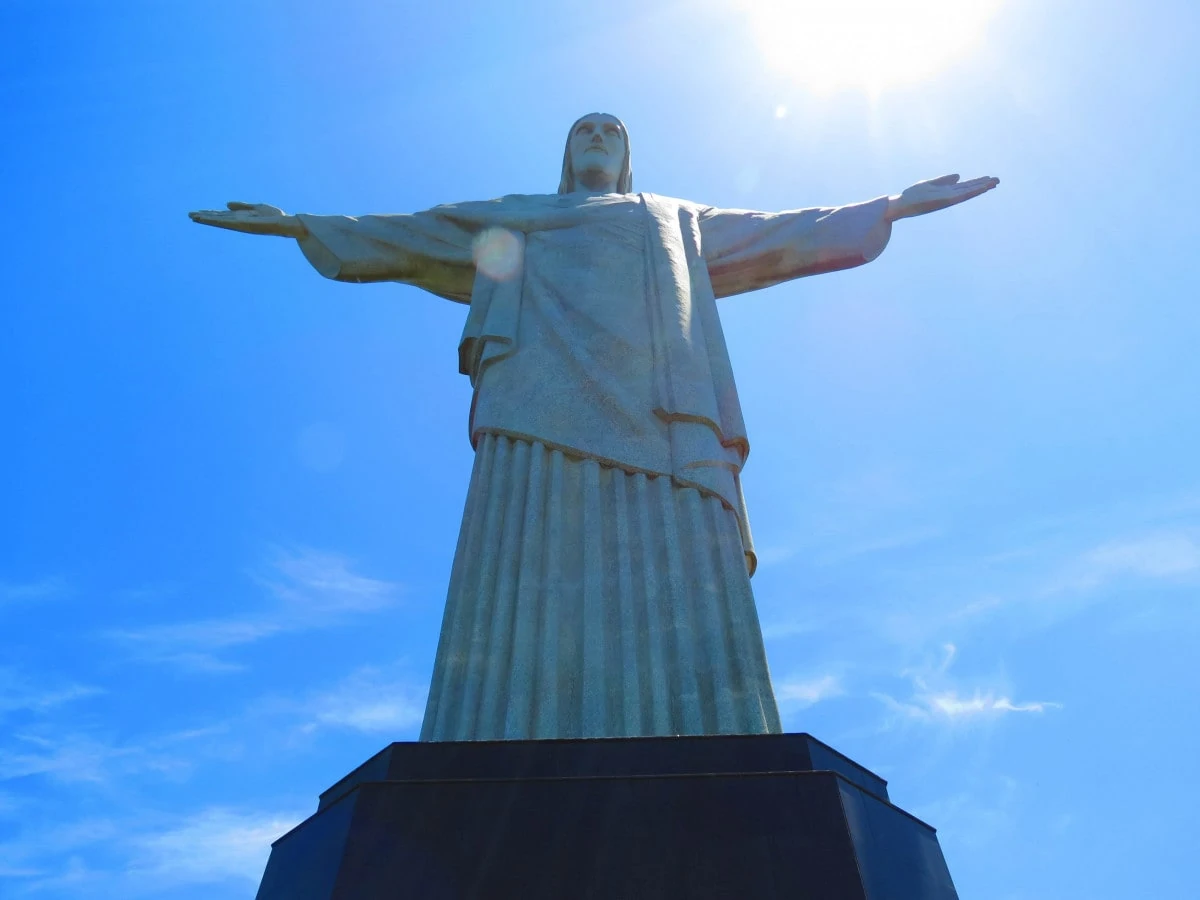
Christ the Redeemer is the iconic hillside monument overlooking Rio de Janeiro, and is a must-visit if you’re spending time in this popular coastal city. One of the most famous landmarks in Rio de Janeiro, the world’s biggest Art Deco sculpture is both a religious statement and a visitor attraction, and the views out over Rio are simply superb. It’s made of thousands of tiny tiles that together form a solid mosaic, and is just as impressive up close as it is when seen from below.
There are several ways to visit Christ the Redeemer, with the most popular being the cog train, which departs from Cosme Velho in town and climbs steeply up the mountain through the tropical Tijuca National Park. This is the most scenic route, with the superior views being on the right side of the carriage.
You can also ascend by shuttle van, or taxi, and if you’re feeling particularly energetic, there’s also the option to hike up to the top. Just bear in mind that it’ll be very hot in the rainforest so it’s advisable to attempt the trail during the cooler mornings.
Once at the top, head to the platform right in front of the statue and wait your turn for the best viewing position overlooking the city far below. Try to choose a clear day if you can to make the most of the panoramas.
Octávio Frias de Oliveira Bridge, Sao Paulo
Explored by James from The Travel Scribes
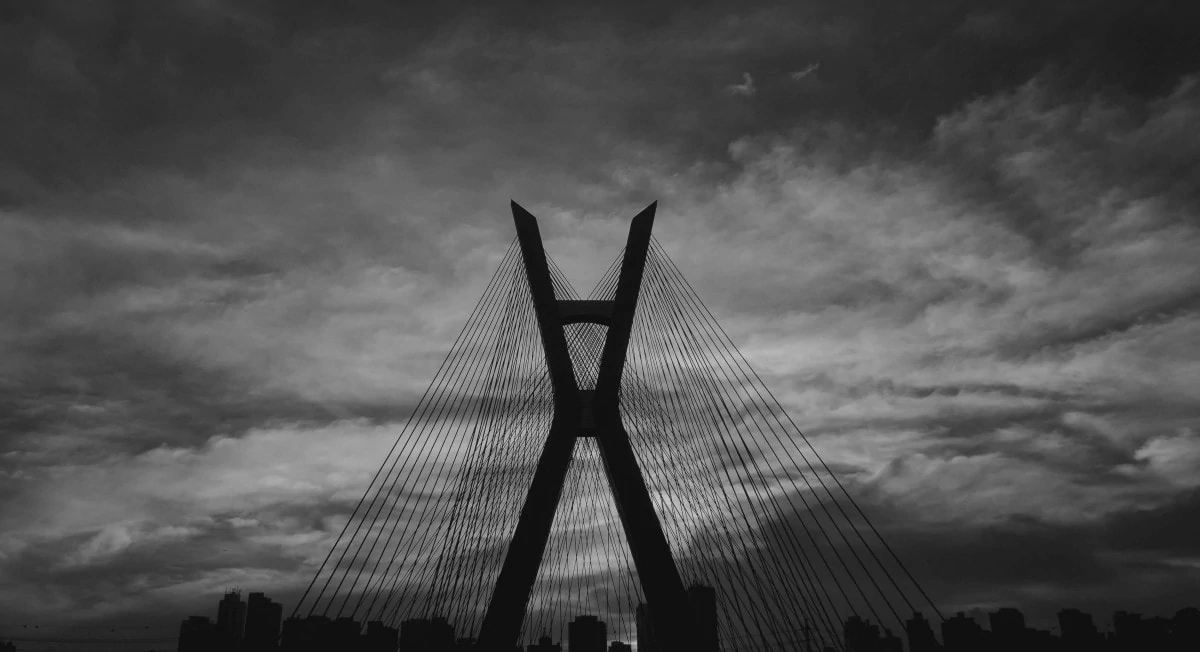
Considered one of the world’s most amazing bridges, the Octavio Frias de Oliveira bridge in Sao Paulo is a feat of modern engineering. The bridge, which connects the area of Marginal Pinheiros to Jornalista Roberto Marinho Avenue, is over 130 metres tall, with two curved tracks which each stretch about 900 metres in length. Named after prominent Brazilian businessman, Octavio Frias de Oliveira, it was first opened in May 2008, as a crucial connector for the disparate neighbourhoods of Sao Paulo.
What makes the bridge so unusual, however, is its X shape. The ‘X’ is about 76 metres wide at the base, a spectacle to behold, particularly at night when brightly lit by multi-coloured lights. It’s also the only bridge in the world which has two curved tracks, supported by only one single concrete mast.
Recommended Reading: The best books about Brazil
Iguazu Falls
Explored by Campbell and Alya from Stingy Nomads
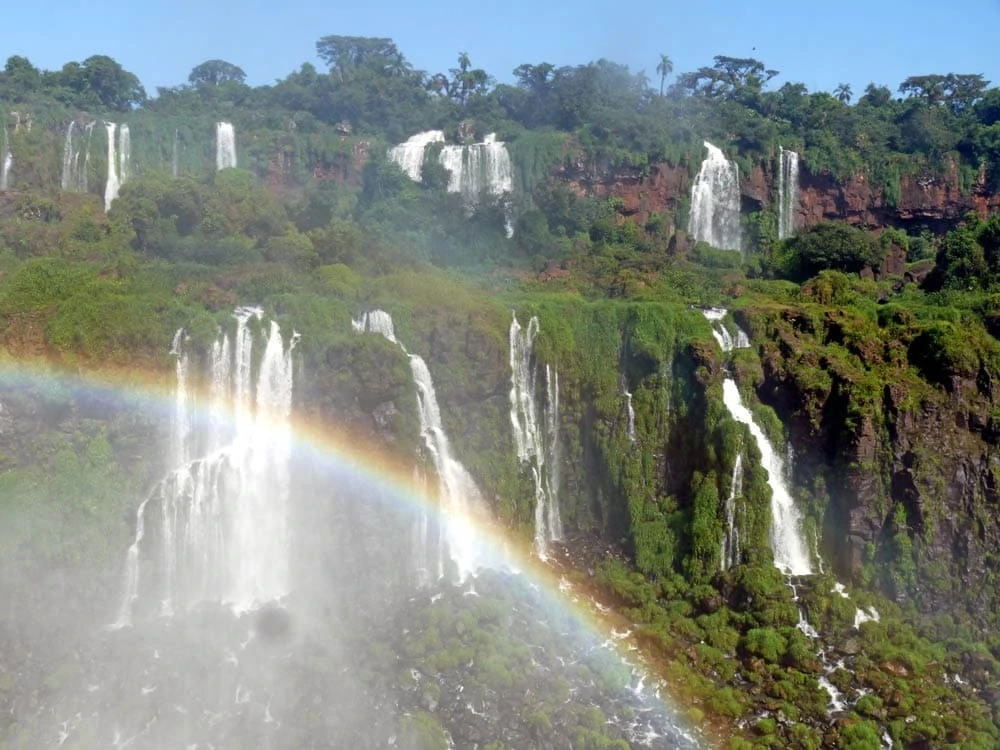
The jaw dropping Iguazu waterfalls are one of the most spectacular natural wonders in South America. This impressive Iguazu falls is made up of 275 individual drops stretching for 2700m and is the largest waterfall system in the world.
The Paraná state in Brazil is connected by the waterfall system with the Misiones state in Argentina. Visitors can reach the falls from Foz do Iguaçu in Brazil or Puerto Iguazú in Argentina. The Iguazu Falls make up the two UNESCO World Heritage Sites: the Iguaçu National Park in Brazil and the Iguazú National Park in Argentina.
The largest part of the Iguazu river flows through Brazil, but the majority of the falls are located on the Argentine side. The Iguazu River forms the boundary between Argentina and Brazil from where it joins the San Antonio River.
‘Which side is better to visit, Brazil or Argentina?’, is a popular question. Iguazú National Park in Argentina has more trails to walk with 15 kilometers of marked trails, but the views and the experience in the Iguaçu National Park in Brazil is simply spectacular, with panoramic views of a network of 275 waterfalls with rainbows everywhere and walking right into Devil’s throat.
Prepare to get wet almost walking into this massive waterfall!
Museu Oscar Niemeyer, Curitiba
Explored by Anthony from Green Mochila
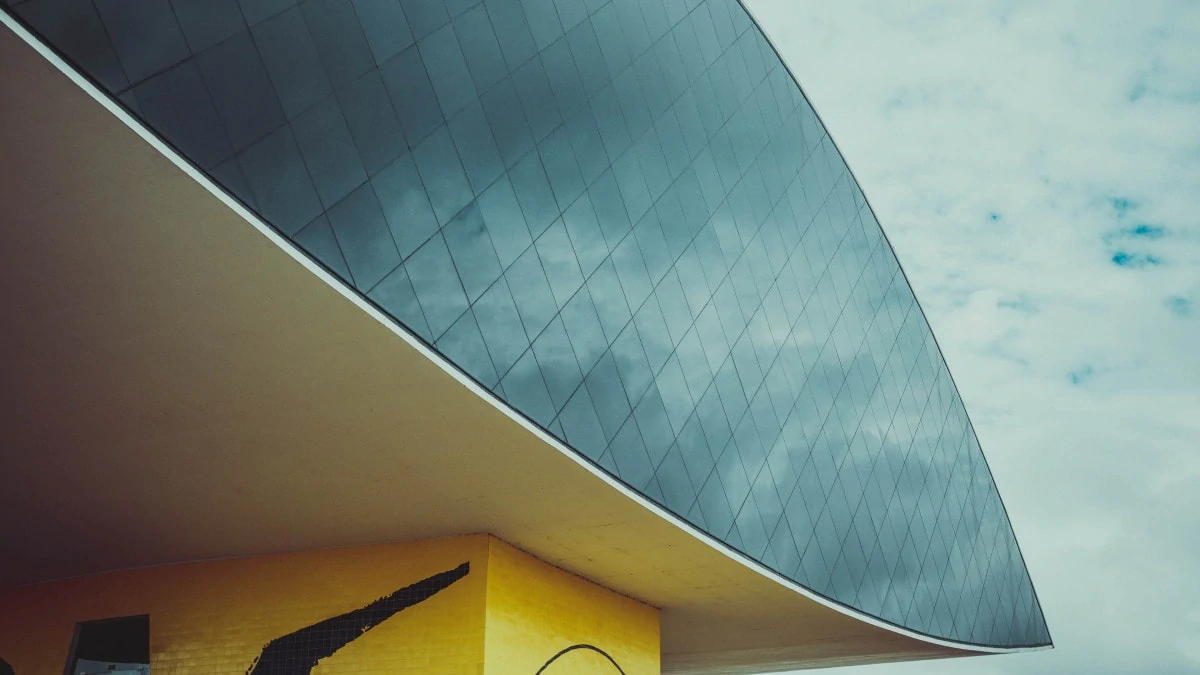
In the southeast of Brazil, more or less halfway between Rio de Janeiro and Porto Alegre, lies a city that is often off the travellers’ radar. Curitiba, the capital of the state of Paraná, lacks maybe the sex-appeal of many other Brazilian cities. Yet it is modern, safe and progressive and definitely earns its nickname of the “Model City”.
The main reason to visit Curitiba is probably this strangely shaped museum located in the Centro Cívico district: the Museu Oscar Niemeyer, also known as “O Olho” (the Eye). It is, simply put, one of the best modern art museums you can visit in South America. For the backstory, Oscar Niemeyer is that illuminated architect who completely co-created the city of Brasília out of nothing. His buildings are often surprisingly bold and always very curvy – he found the use of straight lines utterly boring.
Within its unexpected shape, the building hosts a wonderful collection of paintings, sculptures and visual arts in general. Artists from the state of Paraná and other parts of Brazil have their work showcased at the MON. There are exhibitions on 6 levels, with sculptures scattered also throughout the small garden. Three rooms in the Eye are dedicated exclusively to photography. For us, the most striking room, because of its shape and the installation presented there, was the one at the very top of the Eye.
Curitiba has one major downside: it rains very often. But that doesn’t matter when you’re spending your day under the shelter of Brazil’s most interesting museum.
Sugarloaf Mountain, Rio de Janeiro
Explored by James from The Travel Scribes
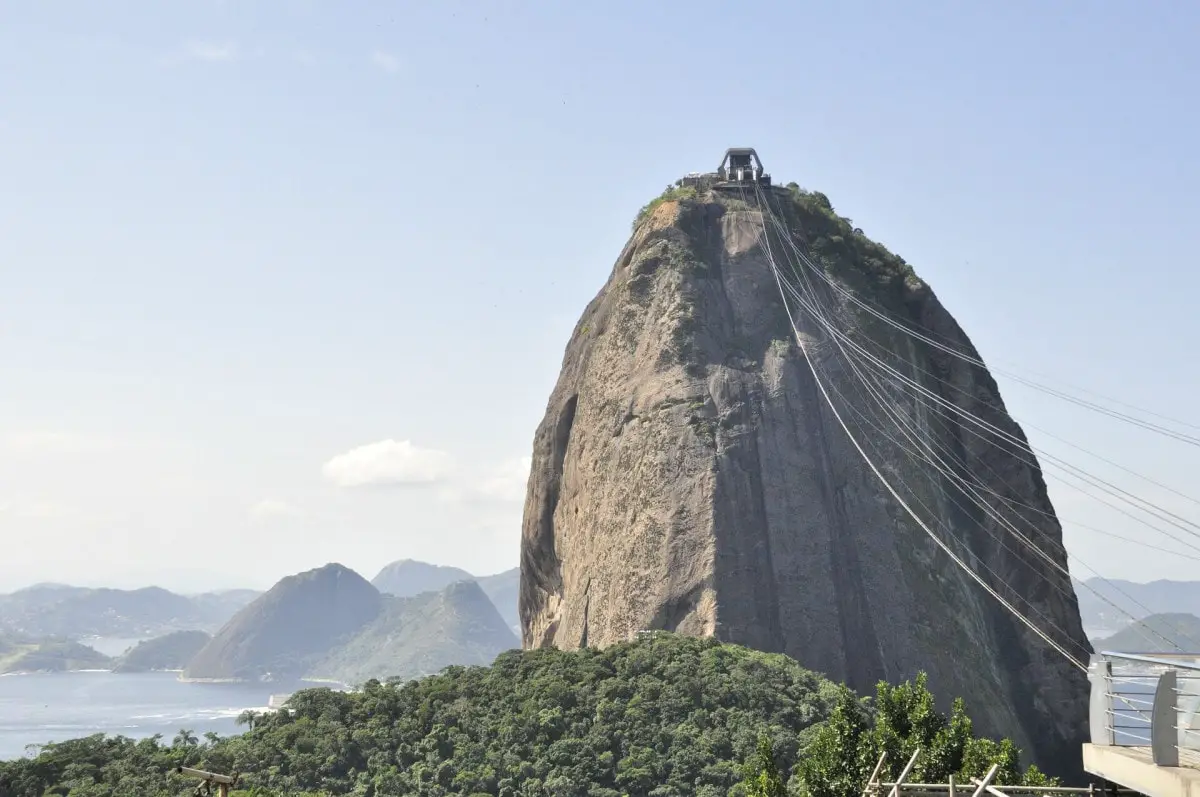
Undoubtedly one of the most recognizable landmarks in Brazil, Rio’s Sugarloaf Mountain is definitely distinctive. The World Heritage-listed peak, which juts out into the Guanabara Bay, looms nearly 400 metres above the Rio harbor, a renowned part of the Rio de Janeiro skyline.
This part granite and part quartz mountain isn’t the only peak rising up in the area, but is undoubtedly the most noticeable, garnering it interest from locals and international visitors alike. The name sugarloaf comes from the traditional way that Brazilians used to store sugar up until the late 19th century, where dark raw molasses were refined into white sugar and made into a tall cone with a slightly rounded top.
Sugarloaf, along with Christ the Redeemer, is one of the most visited Brazilian landmarks, so you’ll need to try and visit it early, for the quietest views. Either you can whizz your way the entire way up via the cable car or, if you’re keen on getting some exercise, you can hike to first section of the trail to Morro de Urca, a smaller peak that’s almost nestled between the cable car’s entrance and Sugarloaf. The walk is worth the effort, as you’ll encounter a few other hikers and perhaps some curious monkeys (that you definitely shouldn’t feed) on your way up. You’ll still need to take the cable car for the second section though, arriving at the top to endless panoramic views of Rio and the Atlantic Ocean beyond.
Read next: 25 must-visit landmarks in South America
Pelourinho Historic District, Salvador de Bahia
Explored by Dan from Layer Culture
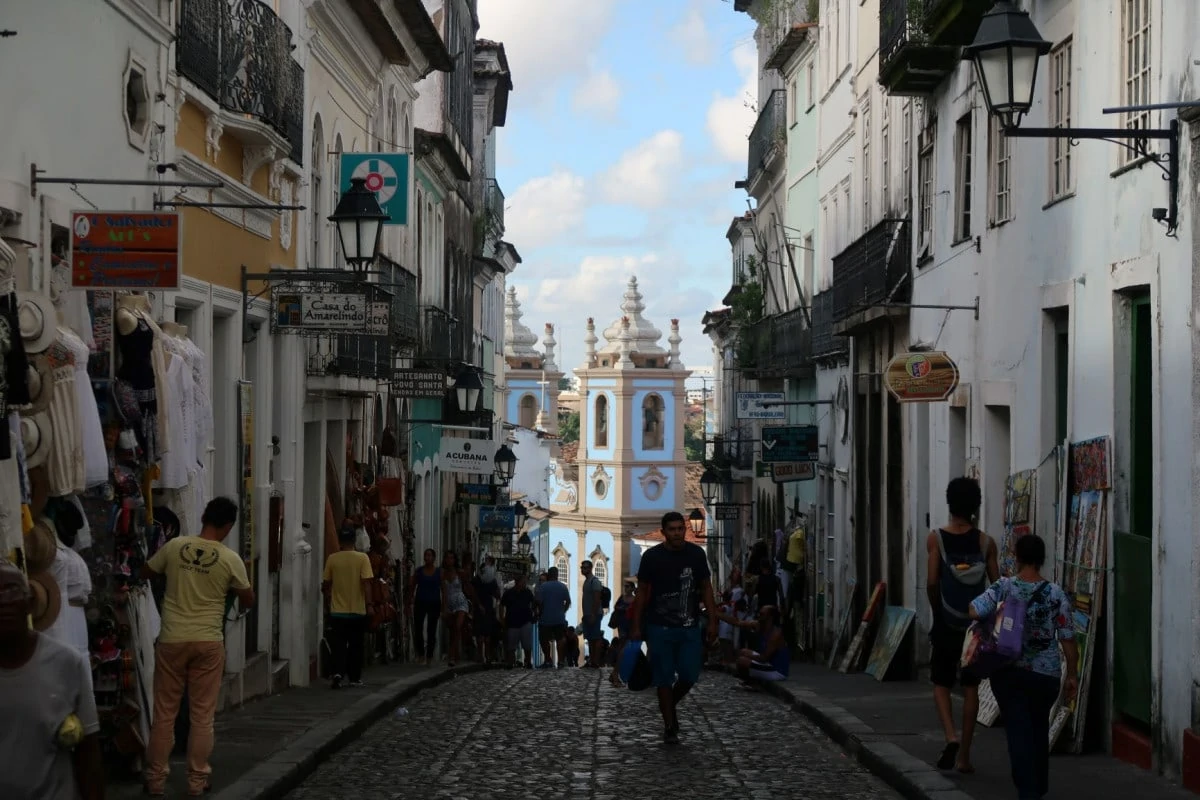
When looking for iconic landmarks in Brazil, you definitely cannot afford to miss out on Pelourinho in Salvador de Bahia. Known as a UNESCO World Heritage Site, Pelourinho is the official historical center of Salvador and is popular among tourists.
Noted for its African Brazillian culture, powerful history, music, and arts, here you can find certain landmarks like nowhere else in South America. A walk down the cobblestoned streets will reveal a unique look into the history of the area which oozes pastel colors from its historic buildings. You’ll encounter animated musicians, extravagant gift shops and local artists from whom you can pick up a souvenir or a gift that is local to the region.
Many of the colonial buildings that surround the site are famous in the region. The historical center is also one of the best places to listen to a live African drum beat ceremony in Brazil. Another one of the best things to do in Salvador is to head from the Pelourinho site over to the Lacerda Elevator. A public urban elevator with two towers (72 meters high) which is listed as another UNESCO Site. All in all, this historic center in Salvador has so much to offer the cultural traveler who wants to learn more about this exciting region of Brazil.
Love the idea of Pelourinho? Brazil is actually brimming with historic towns to visit, like beachside gems such as Porto Seguro, northern beauty Olinda or gold rush town, Ouro Preto.
Museum of Tomorrow, Rio de Janeiro
Explored by Lee from The Travel Scribes
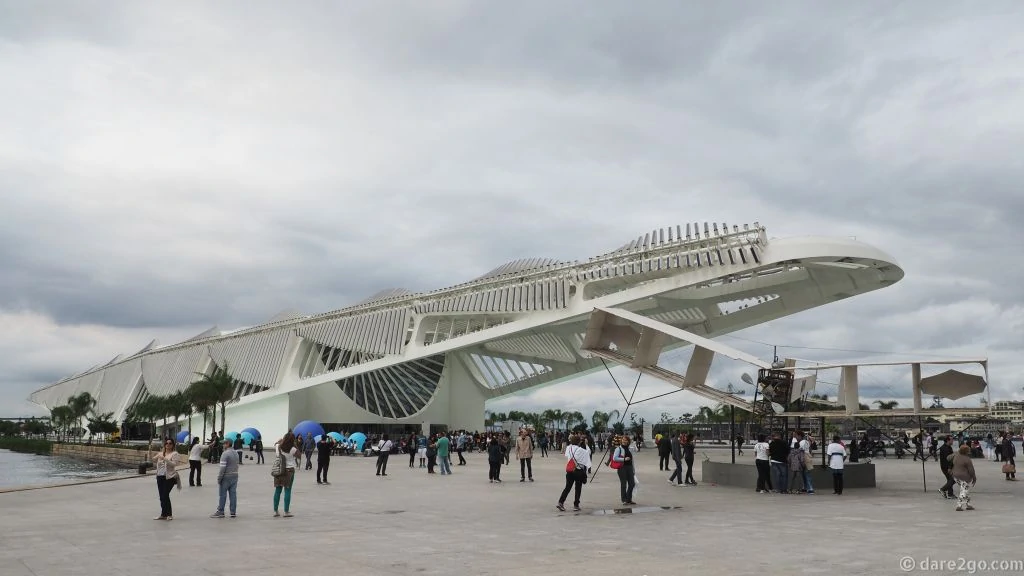
Photo credit @ Juergen from Dare2Go
It’s got to be one of the most unusual looking landmarks in Brazil, if not one of the most interesting architectural structures on earth. It’s the Museum of Tomorrow, a marvel of sustainability that is actually dedicated to the topic. Located in Rio’s old port, the building is focused solely on climate change, the changing environment and social sustainability, almost mixing art and science in exhibitions and experiments that will capture your imagination. With five main areas – Anthropocene, Cosmos, Earth, Tomorrow and Us – visitors can dive into topics like how to make cities sustainable, and the impact of consumerism on the climate.
The somehow dinosaur-shaped building was envisioned as part of the 2016 Summer Olympics, funded by the city’s government. The vision of architect, Santiago Calatrava, the design of the building is meant to explore the relationship between Rio’s city and its natural environs, with 5,000 square metres of exhibition space and then a huge 7,600 square metre plaza that folds out along the dock.
Amazon River
Explored by Christina from Travel2next.com
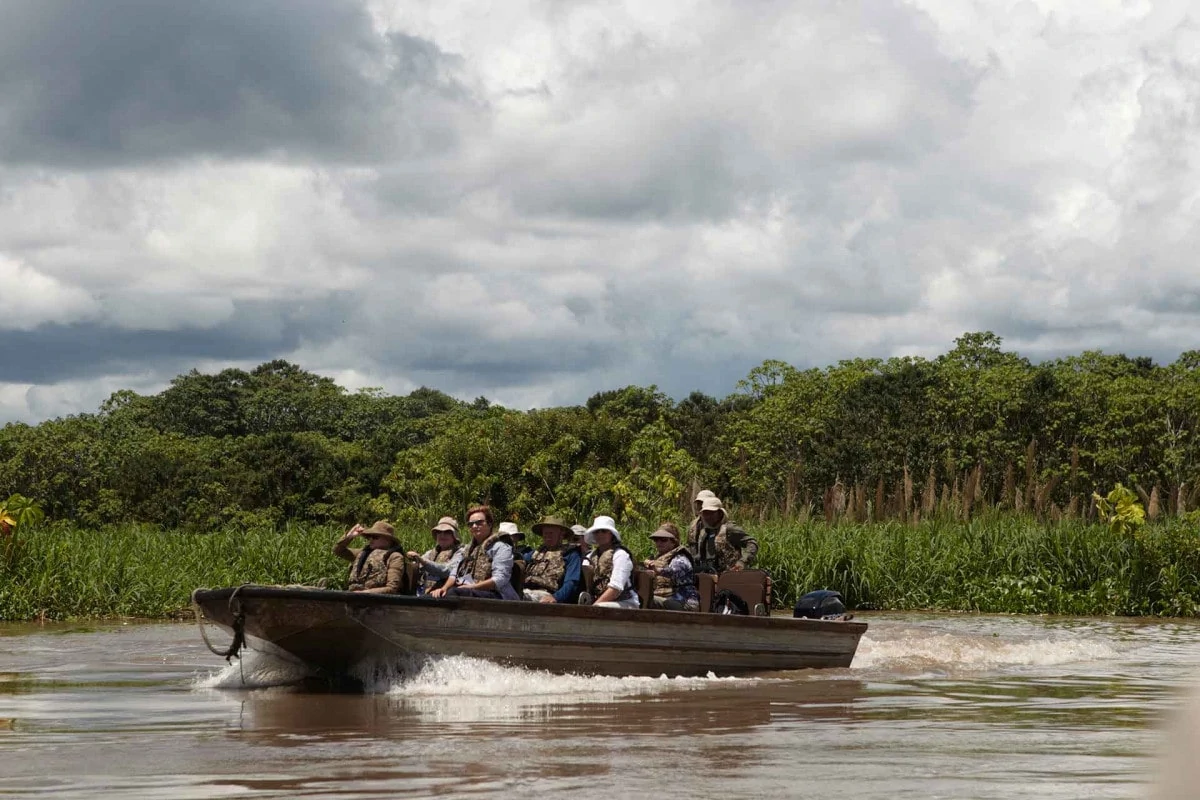
Around a fifth of water running off the earth’s surface is carried by the Amazon River, making it the most impressive river in South America. The river is also a famous landmark of Brazil, discovered by the Spanish in 1541 who named the river after seeing battles between female warrior tribes.
The 6,400 km long river is the world’s most extensive drainage system both by volume of water and area. It stretches through nine countries, including Peru, Bolivia, Ecuador and Columbia, before reaching Brazil where the Amazon River Delta is the world’s largest river delta covering a massive 2.5 million sq km. From Brazil, it flows to the Atlantic.
The Amazon River is a precious ecosystem with over 2,000 species of fish, including piranhas, and hundreds of amphibians. The river is home to the endangered boto (pink river dolphin) and cruising the river is the most popular thing to do in Brazil. Cruises on the Amazon River depart from Manaus in Brazil and offer an opportunity to spot wildlife such as anacondas, sloths, macaws, toucans and many other birds. The Black Caiman is the ecosystem’s apex predator. Wildlife viewing is best after the wet seasons when the water level can rise by 15m, and boats are closer to the treetops.
The Oscar Niemeyer Architecture, Niterói
Explored by Juergen from Dare2Go
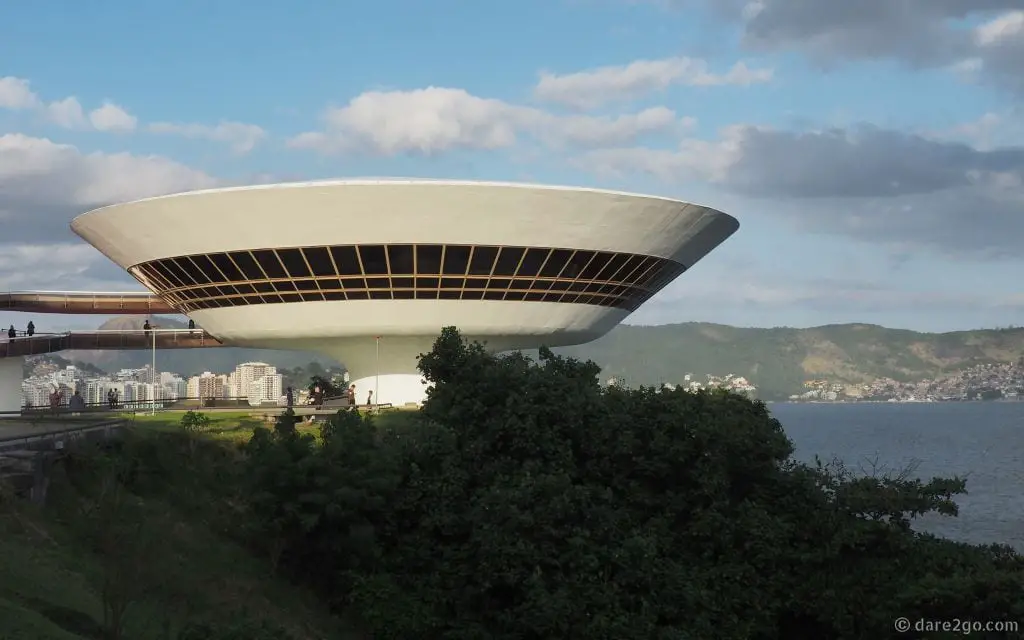
The city of Niterói, just outside Rio de Janeiro, is a must-see destination for anybody interested in contemporary architecture.
Oscar Niemeyer was the most accomplished Brazilian architect of the last century, with projects all over the world. One of the most famous people in Brazil, his biggest achievement is the complete city layout, and the design of nearly all government buildings in Brasilia, the country’s capital city. His second highest number of works in a single place are in Niterói.
If you don’t get the chance to visit Brasilia, you can take a 15-minute ferry ride from Rio, across the Guanabara Bay, to Niterói. Here you will get a good idea of his unusual, and often revolutionary, construction ideas.
Directly to the left of the of the ferry terminal, is the Oscar Niemeyer Architectural Ensemble, with several buildings in his very typical style. Many are dome-shaped and surrounded by water, which is a signature of his work. The centrepiece is the Teatro Popular; its curved roof purposely mimics the appearance of Sugarloaf Mountain in Rio, as seen in the distance.
The most attractive of Niemeyer’s architectural structures in Niterói is the MAC Contemporary Art Museum, which is perched on a cliff above the ocean.
Oscar Niemeyer was born in Rio de Janeiro and died there in 2012, but had to live in exile for many years, due to his communist views. During his career, he collaborated with many famous international colleagues, among them Le Corbusier on the UN Headquarters in New York City. Around 600 projects around the globe are credited to him.
Amazon Theatre, Manaus
Explored by Katalin from Our Life Our Travel
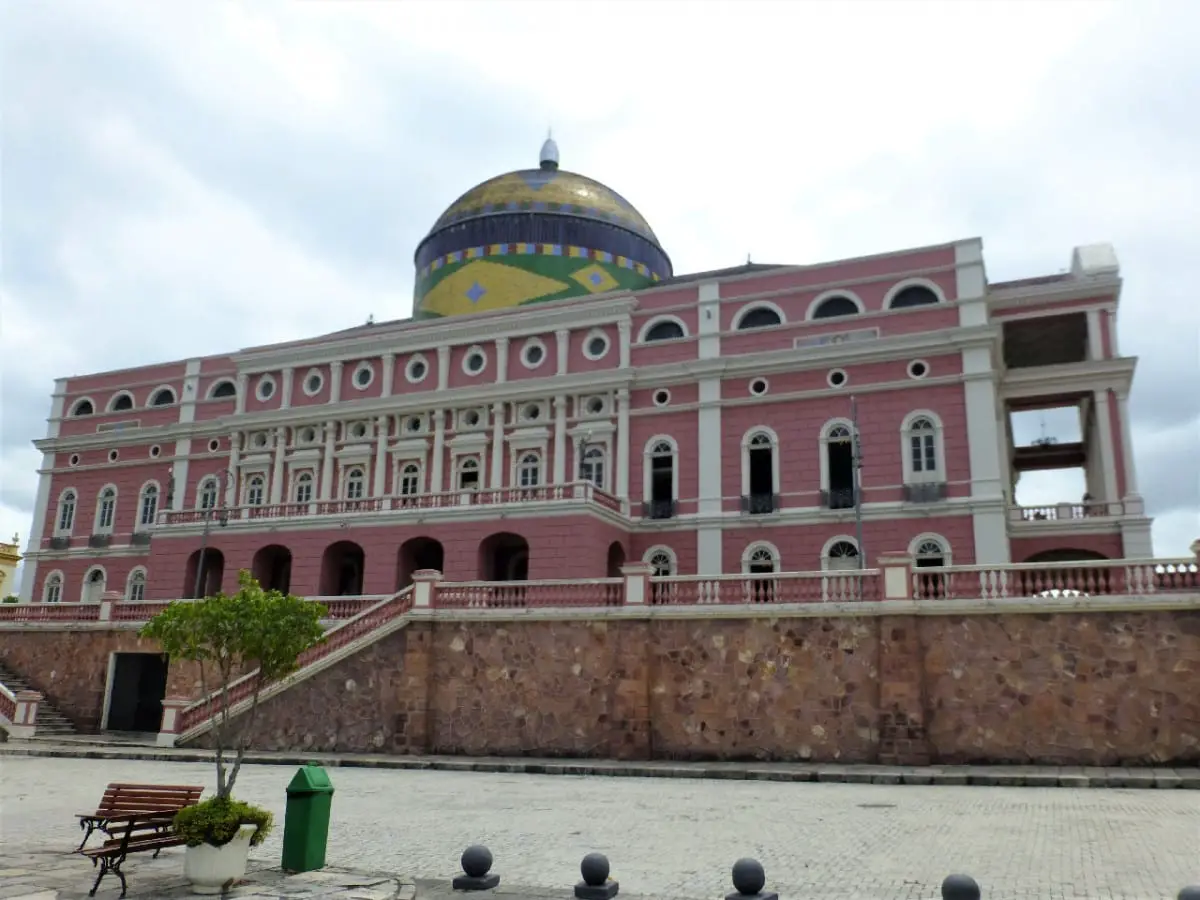
The Amazon Theatre is the Opera House of Manaus and is one of the city’s most popular sights. It is a regular location for concerts, choirs, musicals, and other performances.
This unique building in the middle of the rainforest tells a long and interesting story. It was built during the rubber boom at the end of the 19th century when the region was rapidly developing. The visions of the Opera House referred to it as a jewel in the Amazon Rainforest’s heart. The construction started in 1884, supervised by an Italian architect Celestial Sacardim and finished in 1896.
The building materials were brought from all over the world as the rubber boom provided funds for such an extravagant construction. For example, the roofing tiles were from Alsace, France, the steel walls from Glasgow, Scotland, and the Carrara marbles that were used for the stairs, statues, and columns from Italy. The furniture was carpentered in France, the walls and frescos were decorated by famous Italian artists. The huge dome is decorated with over 30 thousand ceramic tiles that aim to resemble the Brazilian national flag. The huge theatre can house over 700 spectators.
When you visit Amazonia, make sure you walk around the building from both the outside and inside, and participate in one of the performances besides other popular activities in Manaus such as exploring the rainforest, visiting the meeting of waters, or observing pink river dolphins.
Botanical Garden, Rio de Janeiro
Explored by Noel from This Hawaii Life
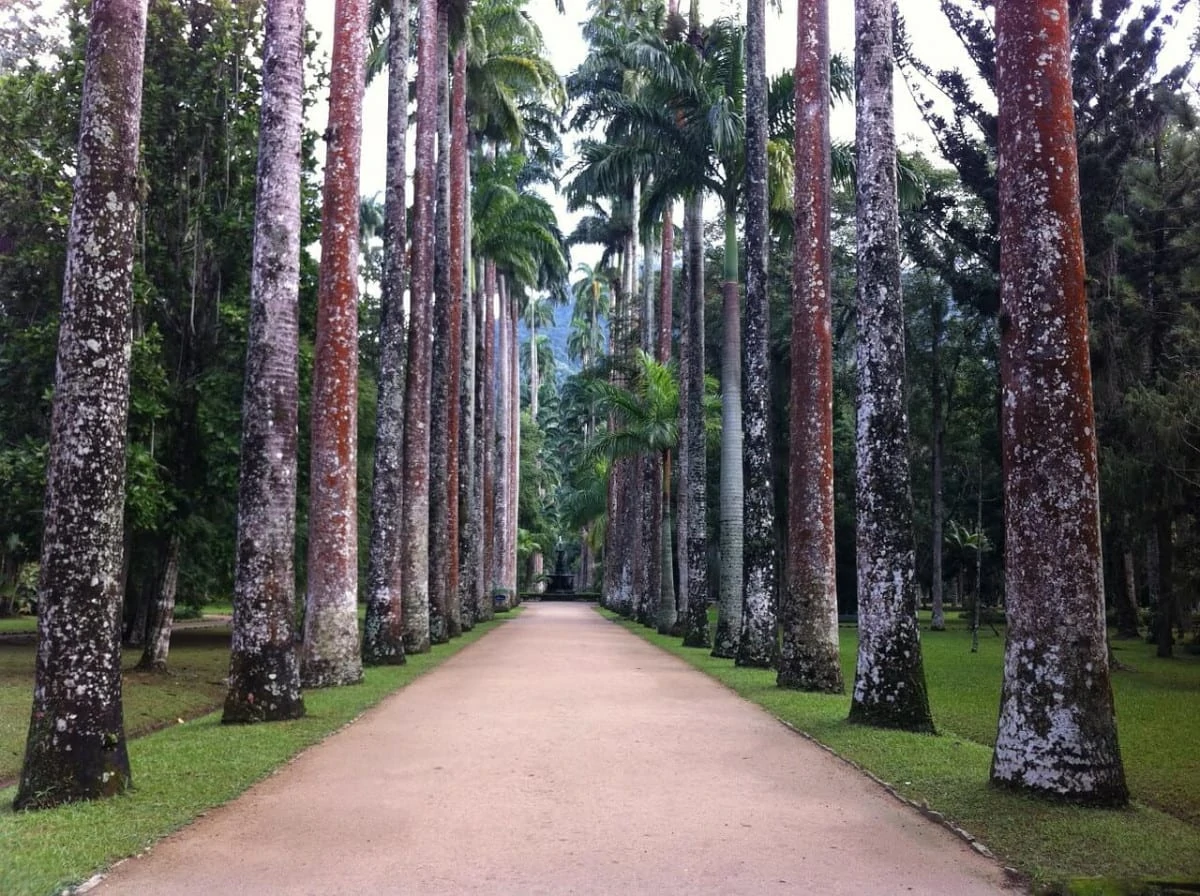
If you are looking for something unique to do in Rio, then go visit the historic Rio Botanical Garden or Jardim Botanico do Rio de Janeiro.
An expansive and historic park, the botanical garden is huge and laid out in very walkable garden rooms including the trail of the arts with flora repositories of the world, the trail of noble trees with all the Amazon and Atlantic forest trees and a variety of smaller scale gardens that focus on specific genera like orchids and bromeliads. It’s a beautiful experience even at the start with wonderful cafes and even restaurants to take a break or even have a nice snack along the way.
The gardens were started in 1808 and used extensively for research and agricultural purposes like creating adaptable growing for popular spices at the time including pepper, vanilla, cinnamon and other fruits that could be exported back to Portugal. There are now over 3,400 species of plants to admire throughout the gardens.
You can sign up for a tour of the gardens or just pick up a map and reading materials to visit the many areas of the park that might interest you. Enjoy something different and unique in Rio by visiting the Jardim Botanico do Rio de Janeiro and you’ll experience another part of this beautiful city’s charms.
Lençois Marahenses National Park
Explored by Ellie from Ellie’s Travel Tips
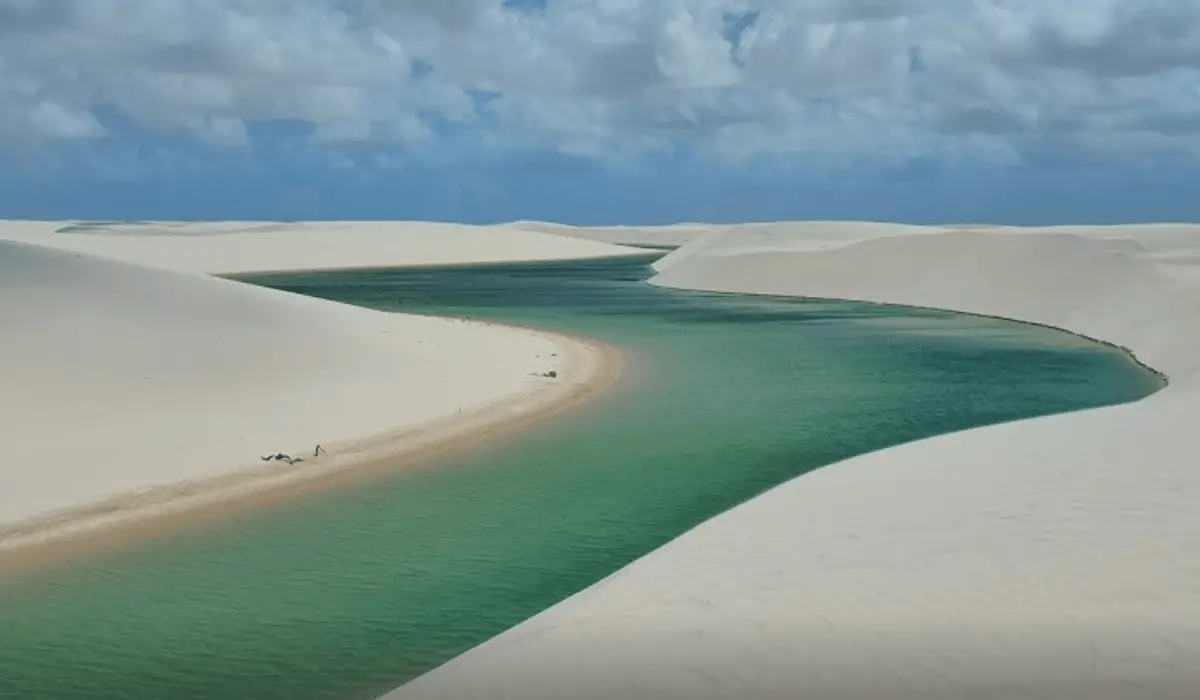
Lençois Marahenses National Park highlights Brazil’s gorgeous sand dunes where crystal blue lakes form during the rainy months of the year. While Lençois Marahenses sits in the north-east region of the country, you will not regret staying a couple of days in the area to explore this vast and unique Brazilian landscape. This breathtaking landmark’s miles of dramatic rolling dunes in some ways make it far more awe-inspiring that Brazil’s more popular natural attraction of Iguaçu Falls.
Whether joining a truck tour of the park or riding horses through the never-ending hills of sand, you will feel as if you have been transported to another world. With three main entry points to the park, Barreinrinhas is the most popular for tourists as it offers plenty of accommodation options, local restaurants, and the Rio Preguicas river — a perfect spot for kayaking and paddle boarding. For a more remote entrance to the park, check out either Santo Amaro or Atins, located on opposite ends of Lençois Marahenses.
The best time of the year to visit Lençois Marahenses National Park is between the months of June and September when the lakes have fully replenished from the nearly 50 inches of rainfall between January and June. Make sure to pack some sunscreen, sunglasses, a hat, and your swimsuit! After hiking through the massive sand dunes under the intense sun, you will love swimming in the scenic and cool lakes found throughout the park.
Metropolitana Nossa Senhora Aparecida, Brasilia
Explored by Chrysoula from Greece Travel Ideas
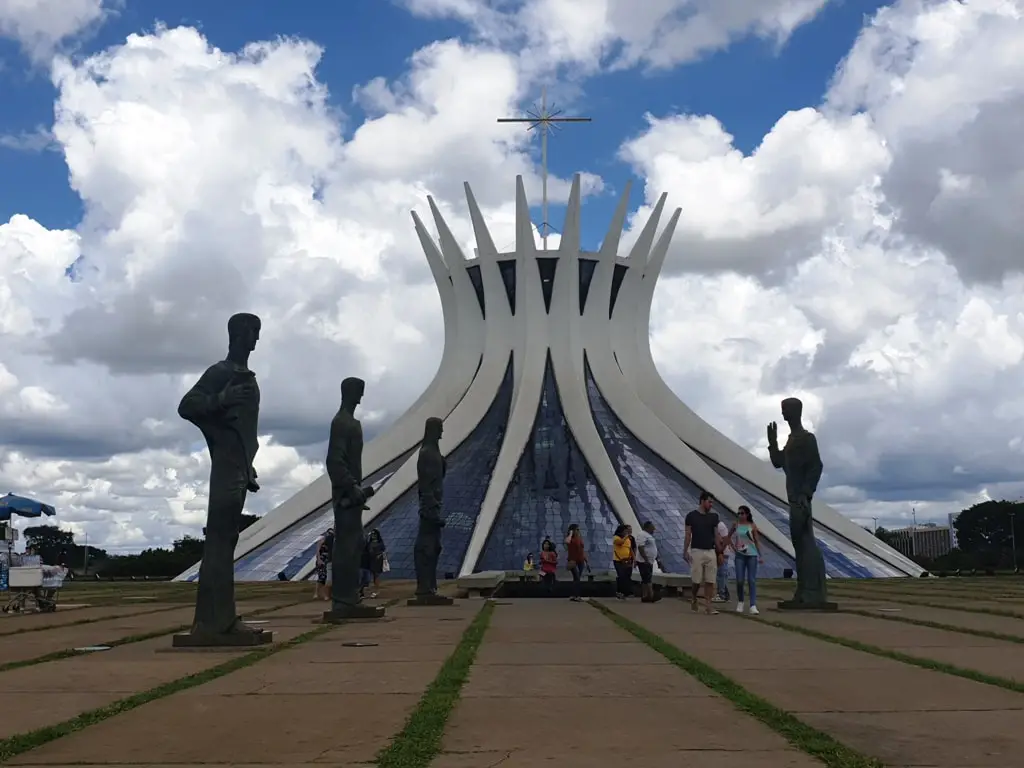
The Roman Catholic Cathedral of Metropolitana Nossa Senhora Aparecida – Our Lady of Aparecida – in Brazil’s capital city, is absolutely stunning, both inside and out. The cornerstone for the cathedral was laid in September 1958, but it was built in phases and not inaugurated until 1970.
The cathedral’s modern design is the work of Brazilian architect, Oscar Niemeyer, who has designed many of the fine buildings in Brasilia. Its eye-catching design makes it an iconic landmark, both by day and when it is floodlit at night.
The cathedral was the first monument built in the city and is a circular design, 70 meters in diameter. There are 16 curved vertical concrete columns that represent a crown of thorns and these are surrounded by a shallow moat of water that reflects the architecture. At the front of the cathedral are four three-meter bronze statues of the Evangelists – Saints Matthew, Mark, Luke, and John.
Inside the cathedral is really impressive as the ceiling is a huge 200 square meter stained glass installation by Marianne Peretti, made with pieces of blue, green, white, and brown glass. Suspended from the roof are three large sculptures of angels and there is seating for 4,000 people.
Etnias Mural, Rio de Janeiro
Explored by Or from My Path in the World
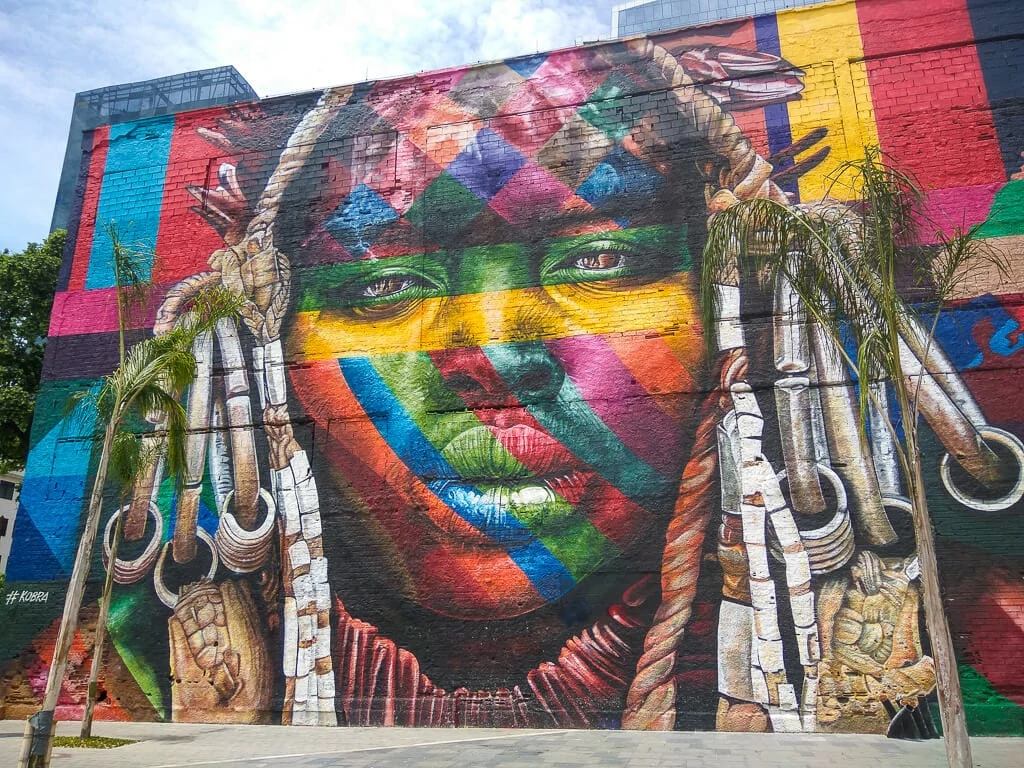
No Rio de Janeiro itinerary would be complete without admiring the Etnias Mural, one of the most beautiful spots in the city that has become one of the most iconic landmarks in Brazil.
This impressive 2500 m² mural was created by the artist Eduardo Kobra and several collaborators. It was painted right before the 2016 Summer Olympics in Rio and was inspired by the Olympic rings representing the five continents. In 2016, it was even listed in the Guinness World Records as the largest spray paint mural by a team (though Kobra beat his own record only two years later with a mural in Sao Paolo).
Across this giant street painting, you’ll see five portraits, each one of a native tribe member from a different continent. These include the Tapajós from America, the Supi from Europe, the Mursi from Africa, the Kayin from Asia, and the Huli from Oceania. Their purpose is to show that we’re all connected, which is why this creation is also called ‘We Are All One.’
You can easily reach the Etnias Mural by tram (Utopia Aquario station is the nearest one) or visit it with a walking tour of the city (not all tours include the mural, so be sure to check that in advance).
Chapada Diamantina National Park
Explored by Bailey from Destinationless Travel
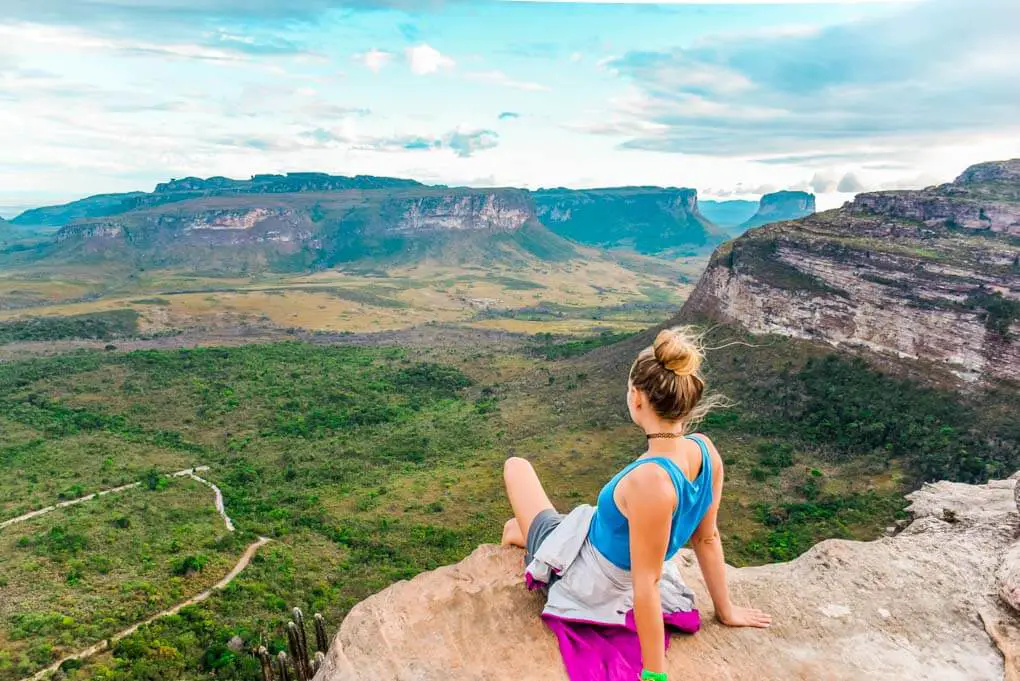
Chapada Diamantina National Park is one of the best places to visit in Brazil. Not only is it stunning, but this unique region remains somewhat off-the-beaten-path. Located 300 kilometers west of the city of Salvador in the state of Bahia, this inland national park boasts towering waterfalls, caves with crystal clear water, scenic hikes, and natural swimming holes – it’s any adventure lover’s paradise!
The easiest way to visit Chapada Diamantina National Park is from the town of Lencois. Most people stay in Lencois for a few nights and visit the explore the national park on day trips and tours. In Lencois there are plenty of hotels and places to stay as well as tour operators who can help you explore this beautiful area. There is a small airport in Lencois, but most people travel there by bus from Salvador. This bus route is common with several departures each day and takes around 7 hours.
There are plenty of things to do and see in Chapada Diamantina National Park, but a few attractions stand out above the others. Poco Azul is a cave filled the clearest water you’ll ever see! You can swim here and see pretty much to the bottom of the cave – it’s pretty cool! Morro Do Pai Inacio is a stunning viewpoint well worth visiting at sunset and Poco de Diabo is a waterfall where you can swim! There is lots more to explore though and you’ll learn that once you visit for yourself!
Copacabana, Rio de Janeiro
Explored by Bruna from I Heart Brazil
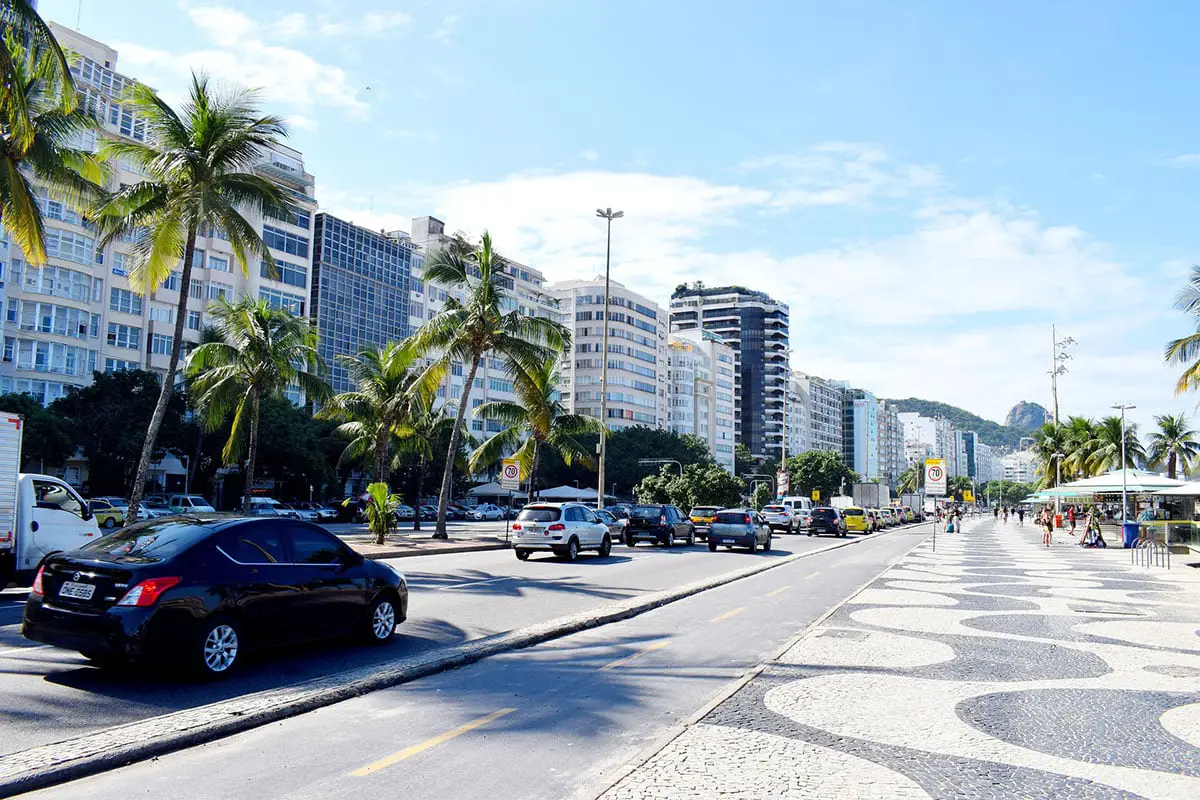
With an iconic black and white wave motif, Copacabana promenade is arguably one of the most recognizable spots in Brazil.
Designed in the 1970s by the landscape architect Roberto Burle Marx, this pavement landscape is 2.5 miles/4 kilometers long.
He was inspired by the characteristic mosaic pavement broadly used in Portugal for centuries now. However, the wave motif has a more obvious influence: the beautiful Copacabana Beach, one of the prettiest beaches in the country.
So next time you visit Brazil, be sure to stroll along this lively promenade while you marvel not only at the beautiful pavement you’re walking on, but also at the incredible landscape of Rio. I can assure you this is one of the best things to do in Brazil and turns out it doesn’t cost a penny!
Many locals come to this place to take a relaxing stroll, exercise, drink, or simply people-watch. There is so much going on in this area the whole day, that you can easily spend hours and hours here, not to mention the incredibly beautiful beach right next to it.
Oh, and here is a friendly tip: bring swimwear, just in case.
Pantanal
Explored by Margarita from The Wildlife Diaries
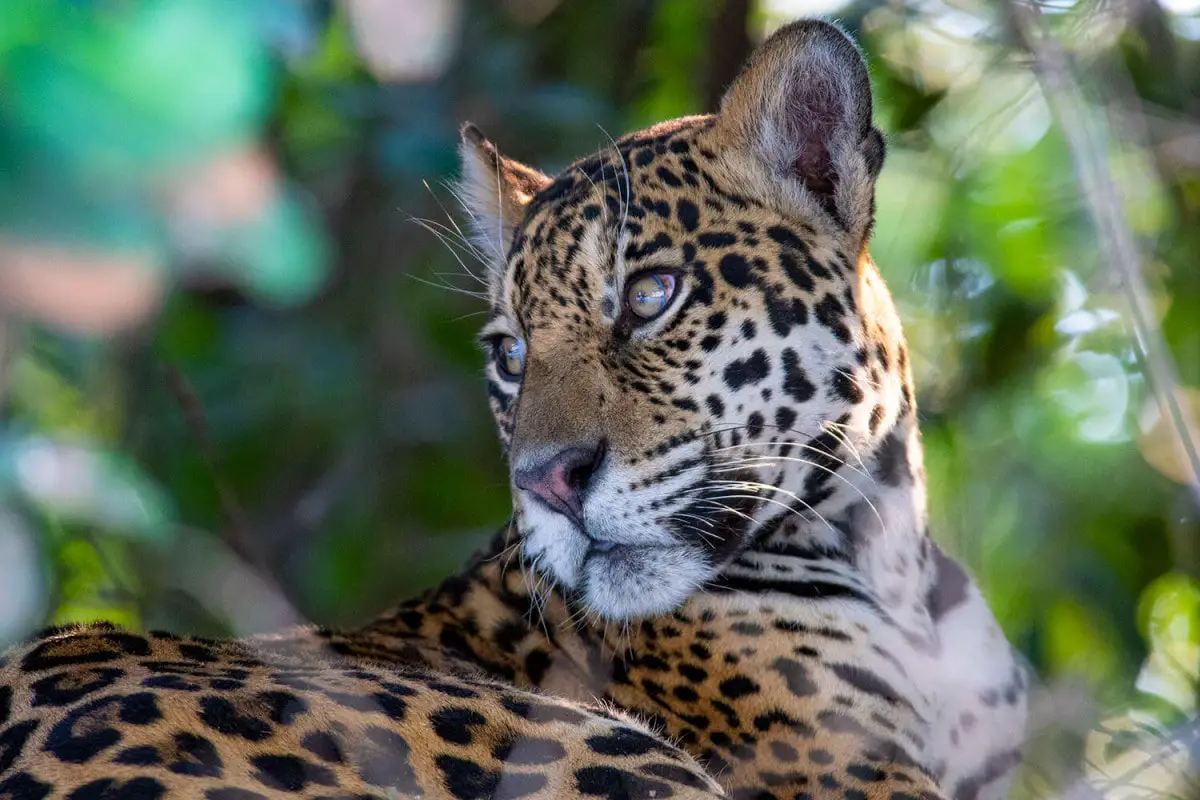
Brazilian Pantanal is one of the best places in the world for watching wildlife in its natural habitat.
Often overshadowed by the Amazon, the Pantanal is the true wild heart of South America. Its wide-open spaces offer fantastic visibility unlike the thick jungle of the Amazon. So, what wildlife can you see in the Pantanal?
As the world’s largest tropical wetland, the Pantanal is the land of the giants. It is home to giant otters, giant anteaters, Hyacinth macaws – the largest parrots in the world – and the America’s only big cat, the jaguar. In fact, the riverbanks upriver from the small community of Porto Jofre in the northern Pantanal is the best place on earth to watch jaguars in the wild.
The beauty of the Pantanal is that most of it is largely inaccessible. The only way to get to Porto Jofre is via the Transpantaneira highway from Cuiaba. No more than a raised dirt road, Transpantaneira gets flooded during the wet season (October to March), but when the floodwaters subside, they leave a patchwork of wetlands and marshes teeming with aquatic vertebrates. These marshes provide an all-you-can-eat buffet for the birds that congregate along the Transpantaneira in huge numbers. So the road becomes a wildlife-watching destination in itself.
Visit between the months of July and September and you will see more wildlife in the Pantanal than on some African safaris.
Escadaria Selarón, Rio de Janeiro
Explored by Charlotte from Footloose Lemon Juice
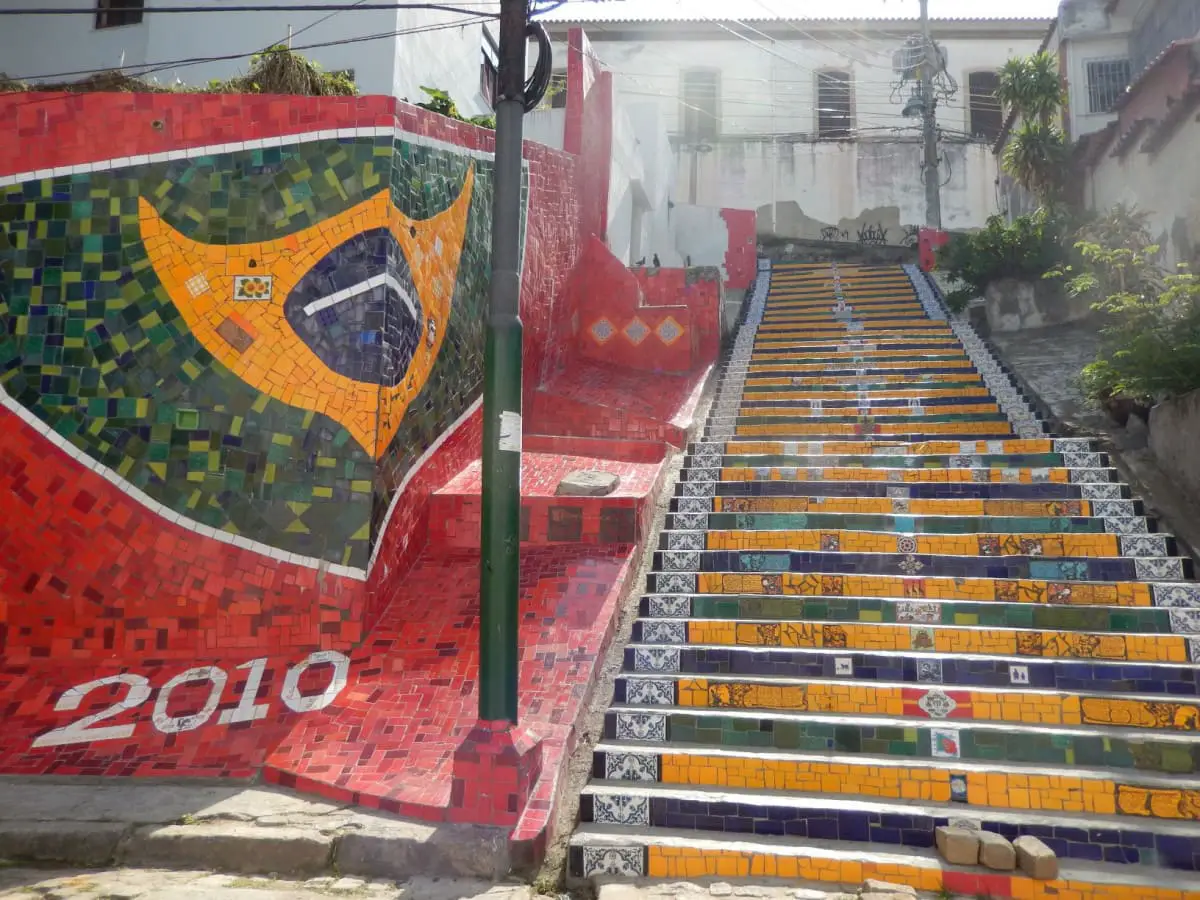
The Escadaria Selarón or Lapa Steps is a staircase embellished with a staggering 2000 ceramic tiles. It connects the neighbourhoods of Lapa and Santa Teresa in Rio de Janeiro. Chilean artist Jorge Selarón began his artistic endeavour in 1990 as a project to decorate the stairs outside his home. Over time the scope expanded, spilling out onto the drab staircase of his neighbourhood.
Selarón was plagued by financial constraints, supposedly selling 25,000 portraits to fund his masterpiece and keep the project afloat. It consumed 23 years of Selarón’s life, but not without the collaboration of other world travellers. As word of the mosaic steps spread, other travellers began donating ceramic tiles as tributes to their countries. To date the stairs have tiles originating from over 60 countries.
The Lapa Steps are public and a good way to see Rio on the cheap. Catch the underground train (Mêtro) to Cinelândia, take Rua de Passeio towards Av. República do Paraguai, then cross over to Rua Teotônio Regadas. The Lapa stairs are at the end of this street, access is free.
Be wary because there are 215 steps with an elevation gain of 125 metres (410 ft) from top to bottom. The stairs are an art gallery you can literally tread on. Make sure you take the time to study the unique hand painted tiles that represent our vast human heritage. Going in the late afternoon and walking to the top of the stairs will help filter out some of the crowds.
Jalapao State Park
Explored by Paula from Paula Pins the Planet
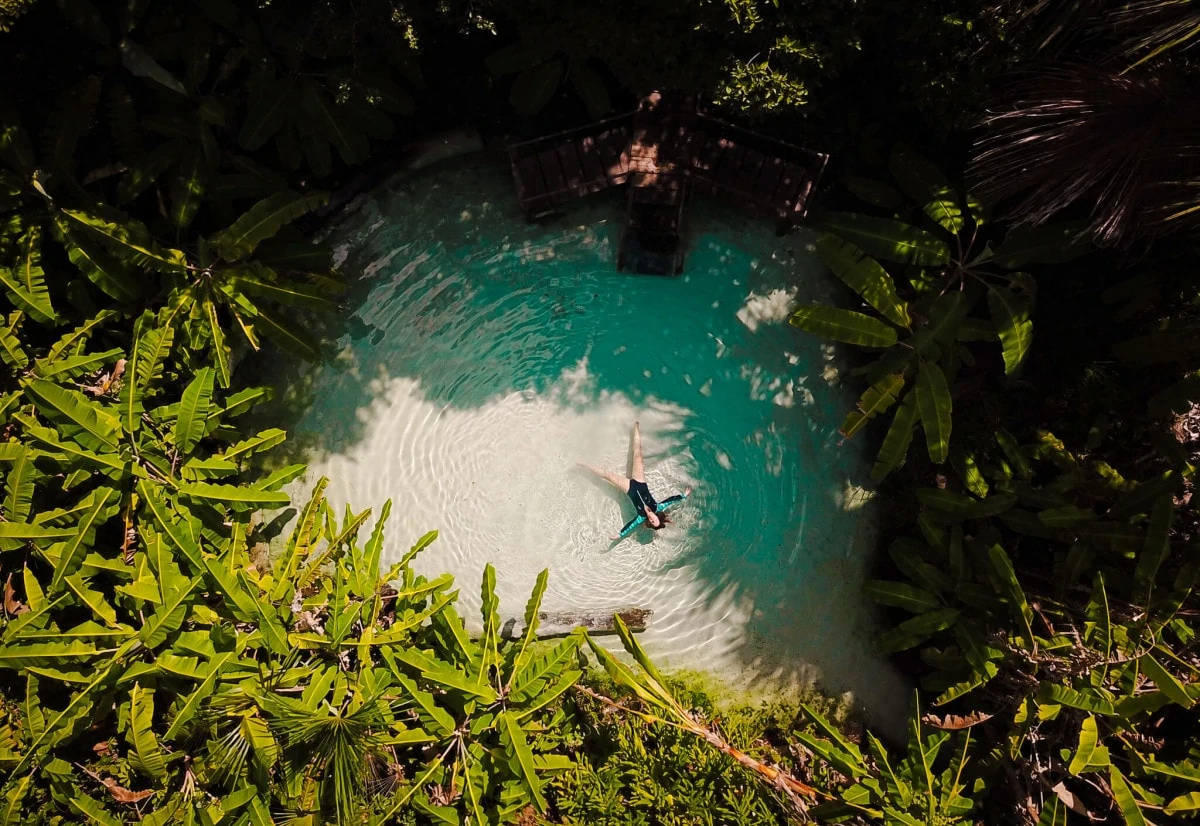
One of the most fantastic landmarks in Brazil is Jalapao State Park – a hidden ecological paradise. The area covers 159 thousand hectares and is one of the newest travel destinations in Brazil for those who love adventure and nature.
The State Park has very rich fauna and flora. In addition, when visiting Jalapão, you will be able to learn more about the local culture with traditional communities and to practice sports such as sandboarding, rafting, trails, and cycling.
This remote and isolated region in Brazil, in the north-central state of Tocantins, is larger than Maryland and virtually empty of humans (it has fewer than one inhabitant per square kilometer). In fact, it’s called a desert for this very reason.
Jalapão is the perfect off-the-beaten-path attraction for nature and adventure lovers. This area offers an incredible array of ecosystems and wildlife, and it is a perfect adventure destination for everyone. It is far from touristy and is a great opportunity to see Brazil in a new light.
To visit Jalapao, you will need to take a flight to the city of Palmas (Tocantins State), arriving at the Lysias Rodrigues Airport (PMW). The airport is the closest to the Jalapão State Park, and it receives daily flights from São Paulo, Goiânia, and Brasília. Once in Palmas, the Jalapão State Park is a six-hour drive away, around 200 miles to reach it.
Maracana Stadium, Rio de Janeiro
Explored by Ingrid blogs at Second-Half Travels

This legendary 70-year-old stadium is a mecca for football fans. Built for the 1950 World Cup, Maracana served as the stage for Brazil’s notorious loss to Uruguay, known as the Maracanazo, in front of almost 200,000 devastated fans. Pelé also famously scored his one-thousandth career goal there in 1969.
Maracana, affectionately nicknamed Maraca by locals, was completely renovated for the 2014 World Cup and 2016 Summer Olympics. It now seats 78,838 spectators, making it Brazil’s largest stadium and the second largest in South America.
Maracana is mainly used by Rio’s four major football clubs: Vasco, Botafogo, Flamengo, and Fluminense. It also hosts major music events and has even hosted the Pope.
It’s an iconic Brazilian experience to watch Flamengo, Brazil’s most popular football team, play at the historic stadium. Brazilians’ passion for the game is contagious. The noise and intensity create an unforgettable atmosphere.
You can buy tickets online, at the team’s clubhouse, or at the stadium itself. You can also take an English-speaking tour to a game. The food selection there is not great, so try to eat beforehand. If you can’t make it to a match, daily stadium tours are also available.
Maracana has its own metro station and is also accessible by train and Uber.
So what do you think of these incredible Brazilian monuments and landmarks? Definitely a few more spots have been added to our bucket list! Let us know in the comments below if you think we’re missing any must-visit landmarks in Brazil!
Want to save this for later? Why not pin it…
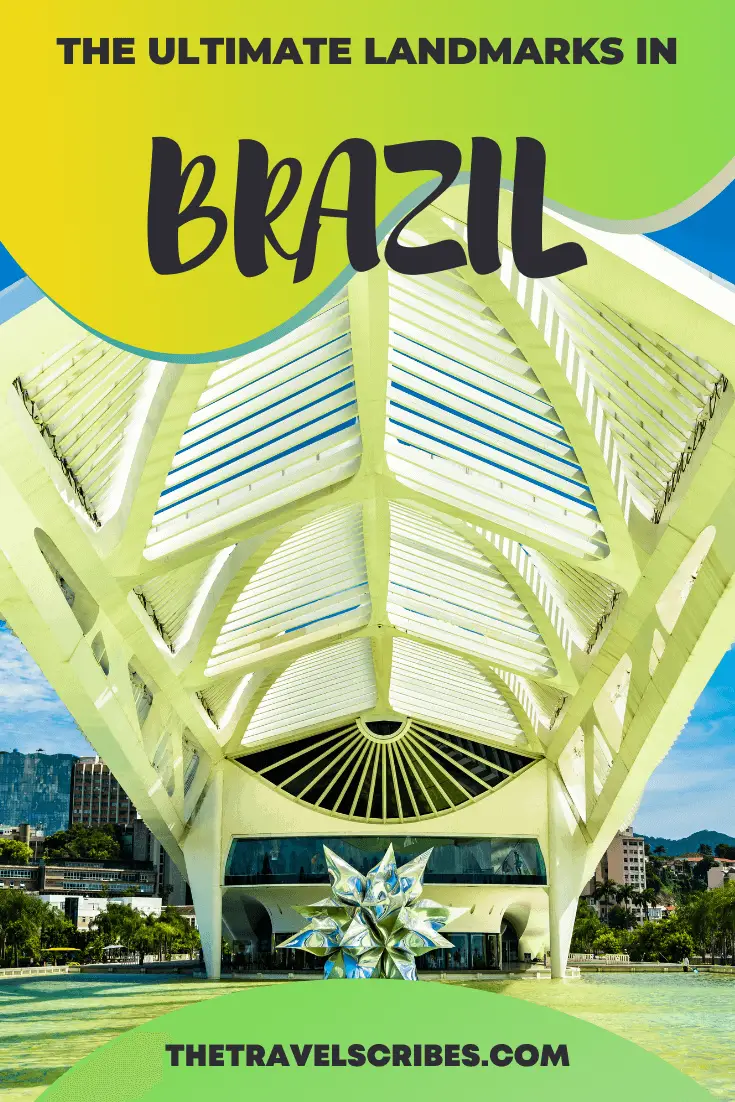

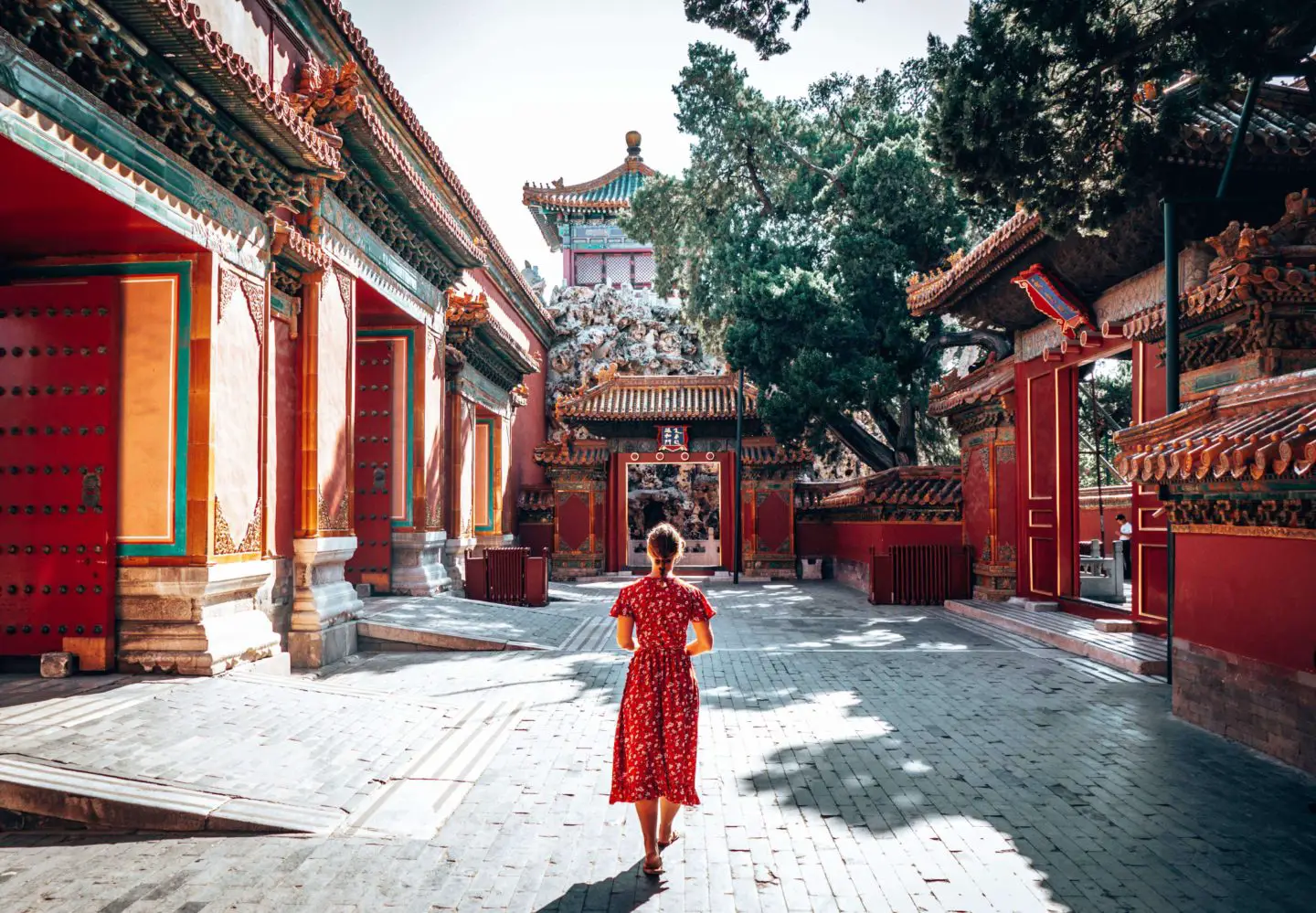
Great article and recap of the best landmarks in Brazil. I am from Brazil and I really recommend anyone to travel to Brazil at least once. It is such a vast country, with so much to offer, with a variety of landmarks, amazing nature to explore, incredible food, and the most friendly people on the planet.